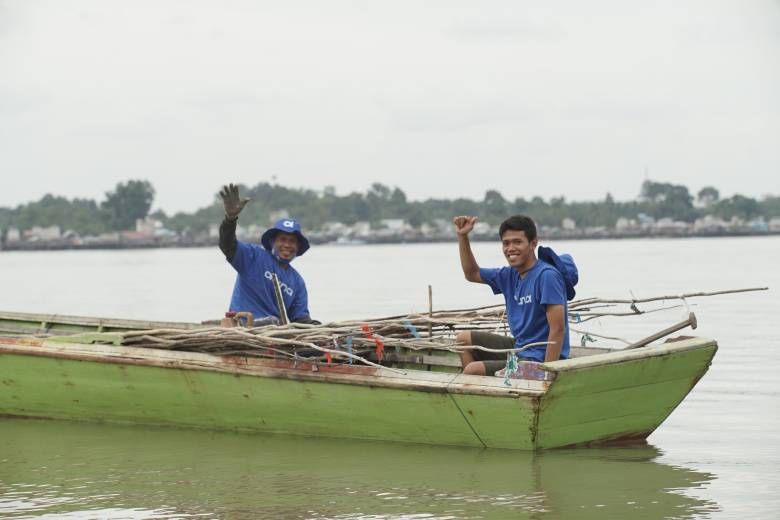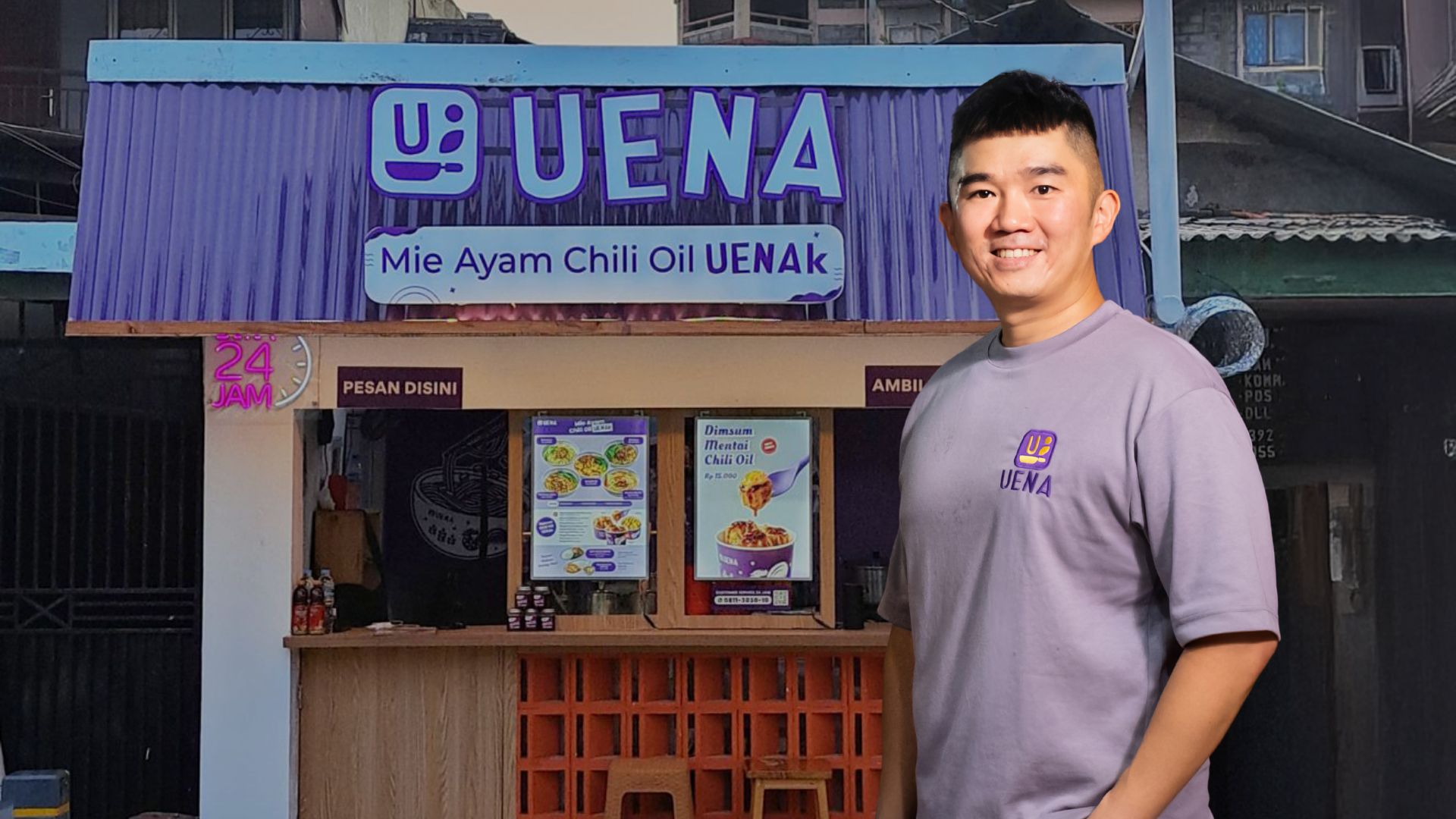Sailing in 2016, Aruna is the monumental work of three visionary individuals aspiring to make this startup the focus of the world’s maritime economy by devising a sustainable and fair fisheries ecosystem. University mates Utari Octavianty, Farid Naufal Aslam and Indraka Fadhillah used to participate in business plan competitions. After failing several times, they started to fish for ideas from the place where they were born, the coastal village. Aruna was founded in the hope of bettering the fishing industry and lives of fishermen through technology, and this idea finally led them to bring home their first trophy.
Growing up in a coastal village, Utari Octavianty was no stranger to the industry. Born to a family whose work revolves around fishing, she realized how underdeveloped this field was. She eventually recognized how the inefficient practices that have gone on for years can be advanced and fixed by technology. The three founders are on a mission to combat the lack of transparency that has been taking place in the traditional fishing industry by constructing a digital platform that directly connects fishermen and their fruitful catch to customers.
Aruna is the first Indonesian startup that particularly focuses on hooking fishermen to a larger market aided by technology. In 2017, the first ever Aruna Site was established in Balikpapan, East Kalimantan. This was not a spur-of-the-moment decision, as Utari was raised in Kampung Baru, Balikpapan. According to the East Ventures Digital Competitiveness Index (EV-DCI) 2021, Balikpapan is the city with the highest digital competitiveness compared to other regions in Kalimantan. In the same year, Aruna also opened their office in Jakarta.
“Indonesia’s yearly maritime potential amounts to US$ 1.2 trillion, but 90% of them transact in the informal sector, with poor quality control and an inefficient supply chain. The conventional system is unfavorable to both fishermen and end customers because of high price markups by multiple middlemen while fishermen remain poor,” explained Utari Octavianty, Co-founder and General Director of Aruna.
The mission to connect fishermen directly to end customers through an e-commerce platform also echoes the important point presented by the EV-DCI report, which stated that e-commerce is one sector that experiences immense growth during the pandemic. Aruna further supports another point in the EV-DCI report which affirms that sectors that are adopting the digital economy are experiencing positive growth. Ever since they have been casting their nets wider by launching and marketing their products on other e-commerces during the pandemic, Aruna has grown sevenfold in 2020. This growth is also owing to the increasing demand for seafood as protein sources during COVID-19, because more people are realizing how significant of a role food plays in maintaining health.
Cruising to prominence
The upcoming years have been bright and promising for Aruna, as they managed to bring home several prestigious accolades such as “Startup Pilihan Tempo 2019”, “Alipay-National University of Singapore Enterprise Social Innovation Winner 2019” and “Forbes 30 Under 30 Asia – Industry, Manufacturing & Energy”.
When it comes to numbers, Aruna has embraced more than 21,300 fishermen and established sites in more than 40 locations. As the cherry on top in 2020, despite the pandemic that ravaged a lot of businesses, Aruna experienced 720% YoY growth.
Aruna has escalated fishermen’s welfare significantly, proven by the fact that one coastal village represented by a fishermen community can reap up to IDR 700 million each month. Not limited to that, Aruna has also been successful in raising the monthly earnings of every fisherman from IDR 1 million to IDR 3 million.
The good news does not end there as Aruna has always taken extra measures to nurture fishermen. The company’s latest innovation takes the form of life insurance for their fisherfolks in collaboration with an insurtech company. Going the whole nine yards, Aruna also devises a “live-in” project where employees from various divisions volunteer to teach the coastal village kids. “That way, we can manage close relationships and also gain more insights to the seaside village,” said Utari.
Attaining more even distribution in Western Indonesia
Aruna’s users are spread in almost all Indonesian islands, starting from Java to Sumatra, Kalimantan, Sulawesi and Eastern Indonesia. The two provinces with the most users are South Kalimantan and East Kalimantan, followed by Aceh and East Java.
In terms of the equality of user distribution, Eastern Indonesia is the area where Aruna Sites are mostly concentrated in. However, this does not indicate that they will not venture into other areas, as they have started expanding to Western Indonesia.
Most of the Aruna Sites are situated in remote areas. One interesting thing to note is the people from these areas have sufficient financial literacy and are hindered by accessibility. Taking this fact into account, strategic partnerships with several institutions are currently forged so the fishermen are able to manage their finances through digital channels.
So many hidden gems are found in remote areas, and this fact is confirmed by how the blue swimming crabs from Papua and Balikpapan are being exported to the global market. This commodity is in high demand, especially in North America and East Asia, due to its high nutrition and low calories.
Consistently embracing fishermen and weathering storms
Although Aruna’s mission is crystal clear, it does not mean that everything is always smooth sailing for Utari, Farid and Indraka. As an archipelago country, Indonesia presents a broad range of advantages as well as challenges. With a vast coastline spanning over 54,716km, Indonesia is not short of high quality and exotic seafood. The challenge, however, lies in their reachability, as most of the crème de la crème of seafood variations are located in remote areas.
Introducing a digital platform to remote areas is not a breezy process, but not impossible. To attain the desired adoption of the technology, the co-founders of Aruna spent a year conducting market validation by directly residing in the coastal area to gain thorough insights. They also believe that human connection and approach are the best ways to get people to go digital instead of presenting them with flashy and elegant UI/UX. Factoring this hiccup and challenge, the Aruna Sites serve as more than fishery hubs and transaction venues, but also where the fishermen learn that online platforms and technology can transform their lives.
One proof of Aruna’s commitment to the betterment of fishermen’s lives is through the help of Local Heroes. Aruna’s special members are stationed in the coastal villages to communicate with the fishermen, helping them input their catch to Aruna’s application and perform quality control over the products. The role of Local Heroes is of the essence. Not only are they the frontliners of Aruna, they also have to have soft skills to blend in and educate the locals to use the platform.
Along the 5-year journey, Aruna has opened many job opportunities for women and multiplied fishermen’s income by three times. “By developing the coastal village, we are sure that they can have an independent ecosystem and don’t need to venture into the big city. The seaside town can grow with its uniqueness, and through that, we can preserve the diversity of our culture. We can also sustain healthy food resources so our next generation can enjoy the benefits,” concluded Utari.
According to David Audy, Operating Partner of East Ventures, “In addition to Aruna’s stellar growth performance, we also like its potential ESG value and impact. Particularly, in its commitment to improve the life of the fishermen and to be a good stewards of the environment and society at large. Furthermore, since Aruna operates in multiple remote areas, if they can successfully utilise technology in its business process and increase internet adoption, then it will contribute to accelerating EV-DCI scores in those areas.”






